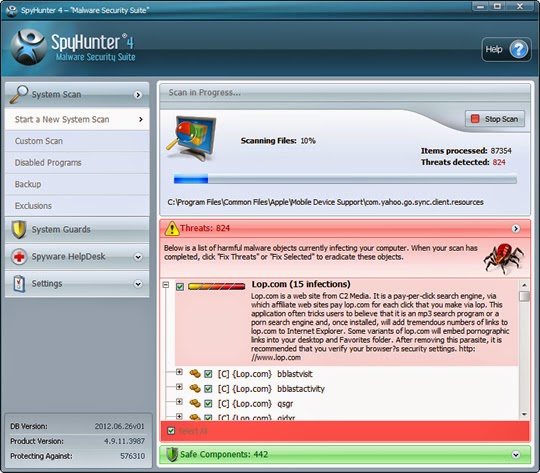Never give 1-844-867-2500 pop-up your trust
Running into 1-844-867-2500 warning from nadialem.com/error/index.php page claiming "your computer has been blocked" or "Hard drive will be deleted" repeatedly is definitely annoying. It may be hard to tell when and how this tech support scam filters your system. However, it is predictable that real harms will befall and your computer remains at risks with this scam threat sticking around. Disguising itself as a reminder from Microsoft or Apple support, it will not only lock up your browser on a BSOD window, but also force you to kill the ongoing browser process via launching Task Manager repeatedly.
From the point of fact, 1-844-867-2500 warning is designed to cause distress and make you behave irrationally – contacting the swindlers who are ready to charge you in many different ways and seek chance to access your computer via remote connection. So do not be fooled!
Do not give 1-844-867-2500 scam the chance to linger on your computer.
For starters, the adware bundled with 1-844-867-2500 fake alert modifies your browser settings, activate bad java script codes and gets you redirected every now and then. It also involves in helping various vicious plug-ins, add-ons or extensions to get on your browsers, so as to expose you to other unwanted pop-ups, tricky ads and phishing contents. Worse yet, this casual visitor runs interference for many other unwanted programs or risky threats that can overly consume system resources, lead to malfunctions and vulnerabilities of all kinds, and make your computer performance far away from normal.
To get rid of 1-844-867-2500 pop-up scam, you should take removal action speedily.
Plan A: Clean up 1-844-867-2500 Pop-up Automatically with SpyHunter
Plan B: Remove 1-844-867-2500 Pop-up Manually
Plan A: Clean up 1-844-867-2500 Pop-up Automatically with SpyHunter
SpyHunter by Enigma Software Group LLC is a spyware detection & removal tool providing rigorous protection against the latest threats including malware, trojans, rootkits & malicious software. It will not only update malware detection and removal definitions daily, but also offer you free technical support and custom fixes for hard-to-kill malware with limited interaction.
Step 1. Click the following icon to get malware removal tool SpyHunter
Step 2. Follow the on-screen instructions to install this security program on your computer.


Step 3. Run SpyHunter and select ‘Start New Scan’ option on the interface. SpyHunter will scan for any suspicious or malicious threats on your machine. It might take some time to complete the process, please be patient.

Step 4. After scanning, click the built-in "Fix Threats" button to automate the whole removal process and get rid of all detected items.

Plan B: Remove 1-844-867-2500 Pop-up Manually
Step 1. End malicious processes generated by this scam Ad
Press key combination (Ctrl+Alt+Del) to launch Task Manager

Step 2. Uninstall unwanted program that bundled with this Ad
Win 7: Go to the “Start” menu, select “Control Panel”. Locate “Programs”. If there is anything related to 1-844-867-2500 Pop-up on the list of your Programs, then select it and uninstall it.


Win 10: Go to the “Start” menu, select “Settings” and then “System”; Click on “Apps & features”, if there is 1-844-867-2500 Pop-up related item, select and uninstall it.

Step 3. Reset your affected browsers one by one
Google Chrome:
Click the Chrome menu on the browser toolbar and select Settings:
a) Scroll down to the bottom of chrome://settings/ page and click Show advanced settings
b) Scroll down to the bottom once again and click Reset Settings

Internet Explorer:
a) Click Start, click Run, in the opened window type "inetcpl.cpl".
b) Click "Advanced" tab, then click Reset.

Mozilla FireFox:
Open Firefox->> choose Help ->>choose Troubleshooting information
a) Click on Reset Firefox. Choose Reset Firefox again to make sure that you want to reset the browser to its initial state.
b) Click Finish button when you get the Import Complete window.

Step 4. Find out and delete associated files
%ProgramData%\*. %CommonProgramFiles%\ComObjects*.exe %windir%\SeviceProfiles\LocalService\AppData\Local\Temp\random.tlb
Specially Remind:
Anything taking a hand in your browsing and messing up things like 1-844-867-2500 Pop-up should be eliminated in a timely fashion. If you are puzzled by the manual removal steps, you could feel free to get security tool – SpyHunter to help you abbreviate the problem.


No comments:
Post a Comment